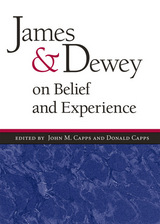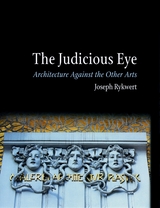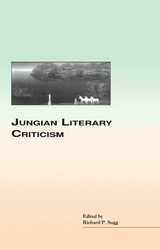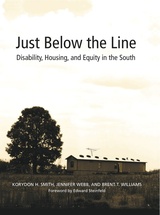525 books about Criticism and 5
start with J
525 books about Criticism and 5
525 books about Criticism
5 start with J start with J
5 start with J start with J

Jamaica's Difficult Subjects
Negotiating Sovereignty in Anglophone Caribbean Literature and Criticism
Sheri-Marie Harrison
The Ohio State University Press, 2014
Recognizing that in the contemporary postcolonial moment, national identity and cultural nationalism are no longer the primary modes of imagining sovereignty, Sheri-Marie Harrison argues that postcolonial critics must move beyond an identity-based orthodoxy as they examine problems of sovereignty. In Jamaica’s Difficult Subjects: Negotiating Sovereignty in Anglophone Caribbean Literature and Criticism, Harrison describes what she calls “difficult subjects”—subjects that disrupt essentialized notions of identity as equivalent to sovereignty. She argues that these subjects function as a call for postcolonial critics to broaden their critical horizons beyond the usual questions of national identity and exclusion/inclusion.
Harrison turns to Jamaican novels, creative nonfiction, and films from the 1960s to the present and demonstrates how they complicate standard notions of the relationship between national identity and sovereignty. She constructs a lineage between the difficult subjects in classic Caribbean texts like Wide Sargasso Sea by Jean Rhys and The Harder they Come by Perry Henzell and contemporary writing by Marlon James and Patricia Powell. What results is a sweeping new history of Caribbean literature and criticism that reconfigures how we understand both past and present writing. Jamaica’s Difficult Subjects rethinks how sovereignty is imagined, organized, and policed in the postcolonial Caribbean, opening new possibilities for reading multiple generations of Caribbean writing.
Harrison turns to Jamaican novels, creative nonfiction, and films from the 1960s to the present and demonstrates how they complicate standard notions of the relationship between national identity and sovereignty. She constructs a lineage between the difficult subjects in classic Caribbean texts like Wide Sargasso Sea by Jean Rhys and The Harder they Come by Perry Henzell and contemporary writing by Marlon James and Patricia Powell. What results is a sweeping new history of Caribbean literature and criticism that reconfigures how we understand both past and present writing. Jamaica’s Difficult Subjects rethinks how sovereignty is imagined, organized, and policed in the postcolonial Caribbean, opening new possibilities for reading multiple generations of Caribbean writing.
[more]

James and Dewey on Belief and Experience
Edited by John M. Capps and Donald Capps
University of Illinois Press, 2004
Donald Capps and John Capps's James and Dewey on Belief and Experience juxtaposes the key writings of two philosophical superstars. As fathers of Pragmatism, America's unique contribution to world philosophy, their work has been enormously influential, and remains essential to any understanding of American intellectual history.
In these essays, you'll find William James deeply embroiled in debates between religion and science. Combining philosophical charity with logical clarity, he defended the validity of religious experience against crass forms of scientism. Dewey identified the myriad ways in which supernatural concerns distract religious adherents from pressing social concerns, and sought to reconcile the tensions inherent in science's dual embrace of common sense and the aesthetic.
James and Dewey on Belief and Experience is divided into two sections: the former showcases James, the latter is devoted to Dewey. Two transitional passages in which each reflects on the work of the other bridge these two main segments. Together, the sections offer a unique perspective on the philosophers' complex relationship of influence and interdependence. An editors' introduction provides biographical information about both men, an overview of their respective philosophical orientations, a discussion of the editorial process, and a brief commentary on each of the selections.
Comparing what these foremost pragmatists wrote on both themes illumines their common convictions regarding the nature of philosophical inquiry and simultaneously reveals what made each a distinctive thinker.
[more]

The Judicious Eye
Architecture Against the Other Arts
Joseph Rykwert
University of Chicago Press, 2008
Is architecture art? This vexed question has been posed since the 1700s, when—breaking from earlier centuries in which there were no divisions between visual artist, architect, and engineer—architects and laypeople alike began to see these vocations as distinct. Exploring how this separation of roles occurred, and how in the twentieth century arts and architecture started to come together again, The Judicious Eye is the definitive history of the relationships between painting, sculpture, and architecture as they have shifted over the past three centuries.
Joseph Rykwert locates the first major shift during the Enlightenment, when key philosophers drew implied and explicit distinctions between the visual arts and architecture. As time progressed, architects came to see themselves as part of an established profession, while visual artists increasingly moved toward society’s margins, deepening the chasm between them. Detailing the eventual attempts to heal this breach, Rykwert concludes in the mid-twentieth century, when the artistic avant-garde turned to architects in its battle against a stagnant society. The Judicious Eye, then, provides a necessary foundation for understanding architecture and visual art in the twenty-first century, as they continue to break new ground by growing closer to their intertwined roots.
Joseph Rykwert locates the first major shift during the Enlightenment, when key philosophers drew implied and explicit distinctions between the visual arts and architecture. As time progressed, architects came to see themselves as part of an established profession, while visual artists increasingly moved toward society’s margins, deepening the chasm between them. Detailing the eventual attempts to heal this breach, Rykwert concludes in the mid-twentieth century, when the artistic avant-garde turned to architects in its battle against a stagnant society. The Judicious Eye, then, provides a necessary foundation for understanding architecture and visual art in the twenty-first century, as they continue to break new ground by growing closer to their intertwined roots.
[more]

Jungian Literary Criticism
Richard P. Sugg
Northwestern University Press, 1992
Jungian Literary Criticism presents a comprehensive, theoretical foundation for a tradition of study that has included some of the leading critics of our time. This collection provides critics, writers, psychologists, and others interested in the relationship between psychology and literature with classics of Jungian literary analysis and with the work of contemporary scholars building on that tradition.
[more]

Just Below the Line
Disability, Housing, and Equity in the South
Korydon H. Smith
University of Arkansas Press, 2010
With America on the brink of the largest number of older adults and persons with disabilities in the country’s history, the deceleration in housing production during the first decade of the twenty-first century, and a continued reliance on conventional housing policies and practices, a perfect storm has emerged in the housing industry. The lack of fit between the existing housing stock and the needs of the U.S. population is growing pronounced. Just as housing needed to be retooled at the end of WWII, the American housing industry is in dire need of change today. The South—with its high rates of poverty, older residents, residents with disabilities, extensive rural areas, and out-of-date housing policies and practices—serves as a “canary in the coal mine” for the impending, nationwide housing crisis. Just Below the Line discusses how reworking the policies and practices of the housing industry in the South can serve as a model for the rest of the nation in meeting the physical and social needs of persons with disabilities and aging boomers. Policy makers, designers, builders, realtors, advocates, and housing consumers will be able to use this book to promote the production of equitable housing nationwide.
Published in collaboration with the Fay Jones School of Architecture.
Published in collaboration with the Fay Jones School of Architecture.
[more]
READERS
Browse our collection.
PUBLISHERS
See BiblioVault's publisher services.
STUDENT SERVICES
Files for college accessibility offices.
UChicago Accessibility Resources
home | accessibility | search | about | contact us
BiblioVault ® 2001 - 2024
The University of Chicago Press









